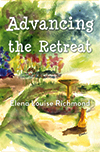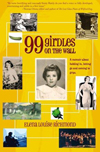Being in Performance
In our culture we hear a lot about performance. Sexual performance, teacher performance, athletic performance, dramatic performance. The word sets my teeth on edge because I think it’s misappropriated. I used to get up to sing, swim through all the perspiration, let my eyes glaze over so as to avoid seeing the audience, and quaver through whatever I had prepared. I was always well rehearsed and I knew I had a beautiful singing voice. Sometimes I pulled it off, sometimes I didn’t, but I was always terrified. When I stood up to sing in front of people, I would hand myself over to them and say: Here, you decide if I have any worth, not just as a singer but as a human being. Psychically, I left my own body, sat in the audience and judged myself.
I waded through all the common advice like Visualize Yourself Succeeding. Visualization—as I understand it– involves creating an image outside of ourselves. But getting outside of myself was causing me problems. The me I would visualize didn’t necessarily correlate with the feeling state that showed up at the point I opened my mouth to sing. There’s a lot more going on in me than I can be conscious of, let alone predict ahead of time.
My students often report feeling confident up to the point their introduction begins. Suddenly their knees buckle. Or if their knees buckled the last time they sang, this time they forget how to breathe. Or when they start to sing, they don’t recognize the sounds they are making and it spooks them. With pianists, the fingers sometimes take on a life of their own while you sit there, feeling superfluous, and watching them humiliate you.
Visualization does not acknowledge vulnerability. When I stood up to sing, all I had was myself and whatever I did with my voice in those few minutes. It was different every time; and it was unknowable ahead of time. Can one ever be prepared for vulnerability? It seems to show up whenever and however it wants to. It is best met with one’s own ordinariness. The trouble with us singers is we think we are so very extraordinary. Understanding that I was an ordinary human being who happened to like to sing ended the debilitating performance anxiety.
The performances I find most compelling are the ones where the singer’s vulnerability is exposed but lightly contained; and with no apologies for being human. I want to feel their heartbreak because it helps me to bear my own. Or I want to be invited into a joy that isn’t trying to manipulate. The joy is there on the face and in the voice, held lightly, as though to say, “Come as close as you’d like or stay far away, it’s not going to change what I am offering.”
What I have learned, and what I tell my students about performing is this: Do what you do when you are home alone washing the dishes; when you are inside yourself, inside your voice, having an internal experience that is only for that moment, not for prosperity, and not something you are visualizing for use at some future date. Take a private, internal sensibility on stage with you. In performance, do what you do when no one is listening or watching.
The best way to prepare for a performance is to practice being present with yourself all the time. So when you get onstage, nothing has changed, you just go on being.
 RSS Feed
RSS Feed
